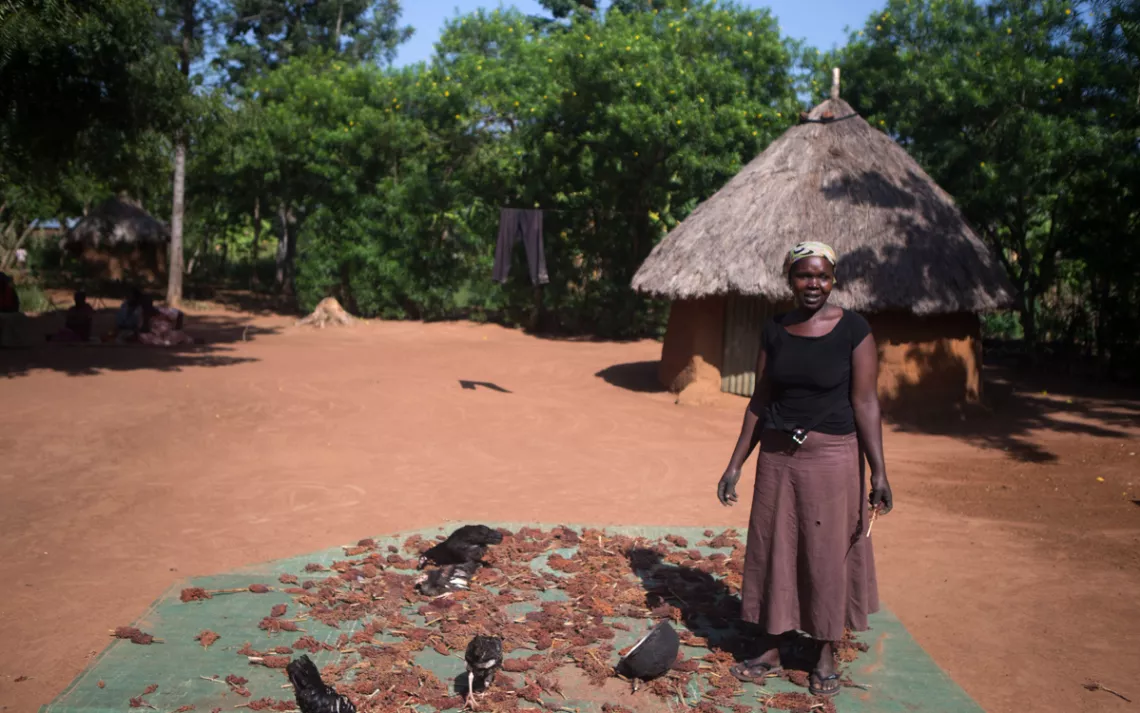Ugandan Women Take the Lead on Adapting to Climate Change
A female-led organization is helping communities in southeastern Uganda

Constance Okollet in her field. She heads the Osukuru United Women Network, which is made up of over 40 groups and has nearly 1,300 members. | Photos by Edward Echwalu
Southeastern Uganda has been hit hard by climate change. Droughts, floods, and increasingly erratic weather patterns mean that the mostly subsistence farmers who live there are facing growing food insecurity. A group called the Osukuru United Women Network, led by Constance Okollet, is mobilizing to help local communities adapt to this new reality. Here are some of the members of the network, their projects, and also some of their challenges.
*

Irene Barbara Amayo, chairperson of a group in the Osukuru United Women Network
In April 2016, she and 59 other members of the network attended a training organized by the Green Belt Movement in Nairobi. When she returned to her village, she and her group pooled their resources to start a poultry farm.

Amayo, making charcoal briquettes in her hut.
In Nairobi, she and the other network members learned how to make the briquettes by mixing dirt and charcoal dust. They sell them and use them for fuel, which means they are cutting down fewer trees for firewood.

Angela Oguti, chairperson of a group in the Osukuru United Women Network
The network encourages members to invest in clean energy. With this small solar charger, Oguti’s children can do their homework at night.

Febe Nyadoi, chairperson of a group in the Osukuru United Women Network
After attending the Green Belt Movement training, she started making fertilizer out of manure and selling it to other farmers.

Justine Anyango, the treasurer for the Osukuru United Women Network
She belongs to a group of fish merchants who have organized through the network to get a better price for their product.

Anyango’s nieces and nephews in front of their hut
Like many women in the network, Anyango takes care of a number of orphans, including her brother’s children. He was killed when the roof of his house collapsed during a storm.

Stephen Okollet, Constance’s husband
He teaches an accounting class to a group of college-age volunteers. Eventually, the volunteers will train women in the network who have started their own businesses. Accounting skills will help them run better businesses and possibly attract outside investment.

Lucy Achieng Kizito, chairperson of a group in the Osukuru United Women Network
During one of the recent droughts, the thicket behind her family’s compound caught fire and burned down the huts where she and her family slept and stored food.

Children playing at the Aburi Community Nursery School
The school, which has five volunteer teachers, one cook, and three support staff for over 300 children, was started by the Osukuru United Women Network.

A member of the Osukuru United Women Network
Those who participated in the Green Belt Movement training are identifiable by their bright-green shirts. They are tasked with being agents of change for the rest of the members and for the entire community.
 The Magazine of The Sierra Club
The Magazine of The Sierra Club



